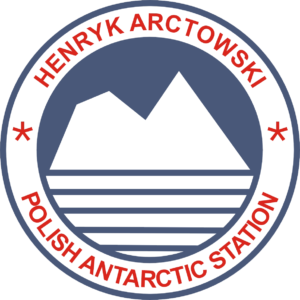 Last 2017, Sebastian (Seba) Gleich, SQ1SGB electronics engineer was overwintering in Antarctica, among the 41st Polish Scientific Expedition, with the task of monitoring of the atmosphere’s electricity. Beside Arctowski Station (WAP POL-Ø1), Poland own two field bases : Lions Rump Refuge (WAP POL-NEW) and Demay Point Refuge (WAP POL-NEW).
Last 2017, Sebastian (Seba) Gleich, SQ1SGB electronics engineer was overwintering in Antarctica, among the 41st Polish Scientific Expedition, with the task of monitoring of the atmosphere’s electricity. Beside Arctowski Station (WAP POL-Ø1), Poland own two field bases : Lions Rump Refuge (WAP POL-NEW) and Demay Point Refuge (WAP POL-NEW).
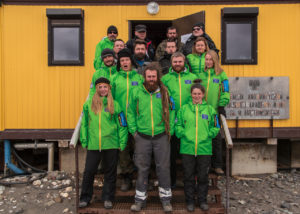 Being an electronic specialist, Seba did work at Lions Rump Refuge (30 km away) to build communication stuff to link Arctowski main station. He sets the mast with antenna at the highest site using all of RG 213 cable available then, he realized that he could not connect his delta mini to the transceiver, without feeder.
Being an electronic specialist, Seba did work at Lions Rump Refuge (30 km away) to build communication stuff to link Arctowski main station. He sets the mast with antenna at the highest site using all of RG 213 cable available then, he realized that he could not connect his delta mini to the transceiver, without feeder.
The problem was solved by the help of Juan Manuel LU4CJM who was at that time operating at Carlini Base.
Seba wrote:– I visited Carlini Station (WAP ARG-2Ø) a couple of times (7 hours by walk through Warsaw glacier). Juan Manuel was a radio engineer there; he gave me a skein of 50 meters RG 213 and … I took it back across the glacier on my backpack. At my return, I immediately start to complete the job …cut, weld, measuring, test, etc.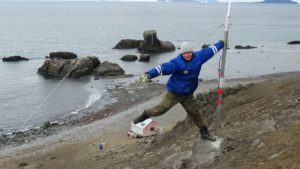 After a couple weeks all was ready. All wintering crew did help me to set the hardware, mast and antennas . It was very hard; we had to pull the top and put something under the center with risk of collapse, then we attached the lashings. It was a long day but at the end, the new mast with my delta mini was on, with a good SWR.
After a couple weeks all was ready. All wintering crew did help me to set the hardware, mast and antennas . It was very hard; we had to pull the top and put something under the center with risk of collapse, then we attached the lashings. It was a long day but at the end, the new mast with my delta mini was on, with a good SWR.
Back to Arctowski, I did make 511 QSO’s with 58 countries signing HFØARC. Antenna did work very good on 40 and 20m; even with 35m/s wind and ice on the wire, the antenna (TNX SP1BKS) withstood well. My first QSO was on june 08.2017 with CX5DI (40m SSB).  At the beginning, for two weeks I could not find propagation window (only 3 QSO’s ), so I decided to build a converter for digital modes. It did take me around one month. I make separation trafo from old analog phone, another one from a network card and on july 15,2017 I was on air (pics aside: the digital converter while in assembly). On JT65 and FT8 I make a lots of QSO, as well as on SSB.
At the beginning, for two weeks I could not find propagation window (only 3 QSO’s ), so I decided to build a converter for digital modes. It did take me around one month. I make separation trafo from old analog phone, another one from a network card and on july 15,2017 I was on air (pics aside: the digital converter while in assembly). On JT65 and FT8 I make a lots of QSO, as well as on SSB.
During my time on the air I make a QSO with SP3BGD, electronic engineer (and Ham radio) who did operate from Arctowski in 1998. It was a very nice QSO with lots warm words.
Last QSO in my log was on 15.oct,2017. Then my chief from Warsaw told me to put down the mast… I secured it on the hall… maybe I will come back one day?
Two weeks later I was in Ushuaia, then finally at home!.
TNX Seba SQ1SGB.
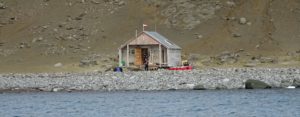 Henryk Arctowski Polish Antarctic Station (WAP POL-Ø1), is located on King George Island in the South Shetland archipelago and it has been operating since the late 1970s.
Henryk Arctowski Polish Antarctic Station (WAP POL-Ø1), is located on King George Island in the South Shetland archipelago and it has been operating since the late 1970s.
It remain the hope that really some days both remote refuges: Lion’s Rump Refuge (WAP POL-NEW) Pic on the Left
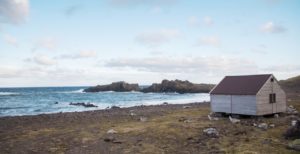
and Demay Point Refuge (WAP POL-NEW) Pic on the Right, could be on the air and a new reference be issued! It will be a great goal for Polish Hams and for the entire Ham radio WW Antarctic hunters community!
http://arctowski.aq/en/expedition-41/nggallery/image/p2710621/
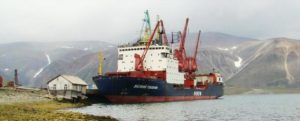 According to NCPOR the 38th Indian Antarctic Research Expedition will use the Icebreaker “Vasiliy Golovnin” for supply the Indian Scientific Bases in the Icy Continent. FESCO Transportation Group signed a contract with the National Centre for Polar and Ocean Research (NCPOR, Ministry of Earth Sciences, Government of India) for 2019 Antarctic Season.
According to NCPOR the 38th Indian Antarctic Research Expedition will use the Icebreaker “Vasiliy Golovnin” for supply the Indian Scientific Bases in the Icy Continent. FESCO Transportation Group signed a contract with the National Centre for Polar and Ocean Research (NCPOR, Ministry of Earth Sciences, Government of India) for 2019 Antarctic Season.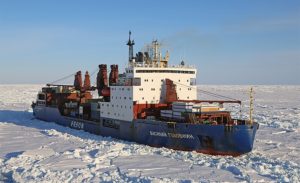 scientists are joining to this expedition aboard FESCO vessel. The ship did start its Antarctic voyage, under the command of Captain Iksan Yusupov, at the port of Cape Town last January 26th with members of the 38th IAE led by Dr Shailendra Saini.
scientists are joining to this expedition aboard FESCO vessel. The ship did start its Antarctic voyage, under the command of Captain Iksan Yusupov, at the port of Cape Town last January 26th with members of the 38th IAE led by Dr Shailendra Saini.
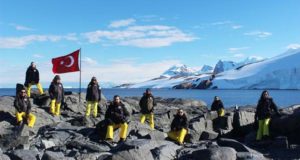 A Turkish expedition team, departed for Antarctica to set up a temporary scientific research base, arrived in the world’s coldest continent on Monday Feb. 4.
A Turkish expedition team, departed for Antarctica to set up a temporary scientific research base, arrived in the world’s coldest continent on Monday Feb. 4.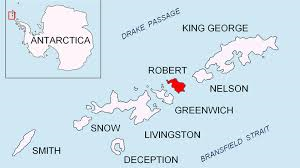 sources indicate Robert Island as a possible site, where in 2018, 28 Turkish researchers built the country’s first campsite.
sources indicate Robert Island as a possible site, where in 2018, 28 Turkish researchers built the country’s first campsite.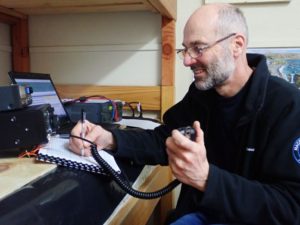 Macca Station Communications Tech, Norbert Trupp VK5MQ, is the Ham radio operator actually at Macquarie (WAP AUS-Ø8). He spends some of his spare time working other Hams worldwide operating as VKØAI from the shack set on Hut Hill, facing the East coast’s sea just in opposite site of the main building’s station of Macquarie.
Macca Station Communications Tech, Norbert Trupp VK5MQ, is the Ham radio operator actually at Macquarie (WAP AUS-Ø8). He spends some of his spare time working other Hams worldwide operating as VKØAI from the shack set on Hut Hill, facing the East coast’s sea just in opposite site of the main building’s station of Macquarie.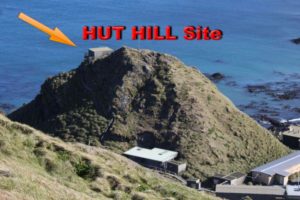
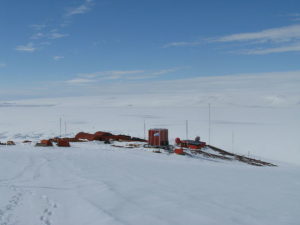 BaseBelgrano II was founded on February 5, 1979, to replace the Belgrano I (WAP ARG-Ø5). Subsequently, a third base, Belgrano III (WAP ARG-Ø7), was added, which was in operation from 1980 to 1984 when it was deactivated and evacuated on January 14, 1984
BaseBelgrano II was founded on February 5, 1979, to replace the Belgrano I (WAP ARG-Ø5). Subsequently, a third base, Belgrano III (WAP ARG-Ø7), was added, which was in operation from 1980 to 1984 when it was deactivated and evacuated on January 14, 1984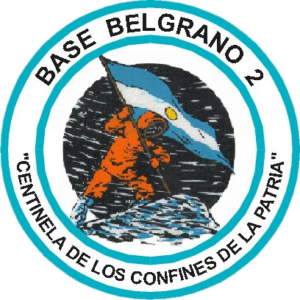 , due to the glaciological composition endangering personnel and equipment.
, due to the glaciological composition endangering personnel and equipment.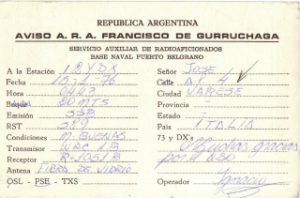
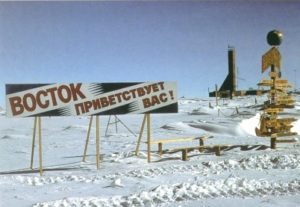 Alexey Turkeev, RD1AV is the Season team leader at Vostok Station (WAP RUS-13). He is active in his spare time since last December 2018 and will be there until the end of February 2019 as RI1ANV , sometimes in tandem with Alex (Alexander Solodov, RX3ABI) signing RI1ANM. They operate SSB, CW and FT8
Alexey Turkeev, RD1AV is the Season team leader at Vostok Station (WAP RUS-13). He is active in his spare time since last December 2018 and will be there until the end of February 2019 as RI1ANV , sometimes in tandem with Alex (Alexander Solodov, RX3ABI) signing RI1ANM. They operate SSB, CW and FT8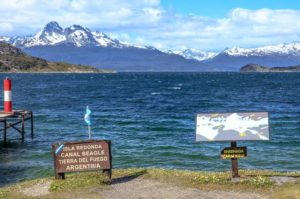 Redonda Island 54° 51′ 49″South, 68° 28′ 54″ West, is a small island territory at the mouth of Lapataia Bay, belonging to the Ushuaia Department of the Province of Tierra del Fuego, Antarctica and the South Atlantic Islands in the southern tip of Argentina.
Redonda Island 54° 51′ 49″South, 68° 28′ 54″ West, is a small island territory at the mouth of Lapataia Bay, belonging to the Ushuaia Department of the Province of Tierra del Fuego, Antarctica and the South Atlantic Islands in the southern tip of Argentina.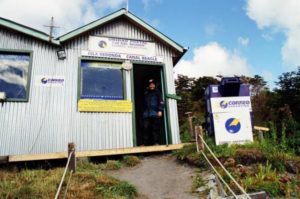 Hut residence of which, ruins still remain in site. Actually, a small detachment of the Naval Prefecture hosts 3 person and the site is equipped with a kitchen, dining room, two rooms and a radio room that serves to communicate with all ships and boats that navigate the area.
Hut residence of which, ruins still remain in site. Actually, a small detachment of the Naval Prefecture hosts 3 person and the site is equipped with a kitchen, dining room, two rooms and a radio room that serves to communicate with all ships and boats that navigate the area.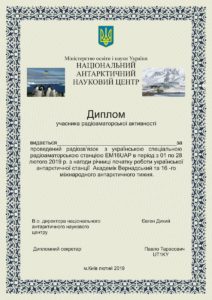 EM16UAP, Ukrainian Antarctic Program (WAP 295) is a special call sign on the occasion of the start beginning of the work at the Ukrainian Antarctic Station Academik Vernadsky (WAP UKR-Ø1), which began its activities in Antarctica on February 6, 1996 and now is joining the 16th International Antarctic Week (AAW). QSL via UT1KY
EM16UAP, Ukrainian Antarctic Program (WAP 295) is a special call sign on the occasion of the start beginning of the work at the Ukrainian Antarctic Station Academik Vernadsky (WAP UKR-Ø1), which began its activities in Antarctica on February 6, 1996 and now is joining the 16th International Antarctic Week (AAW). QSL via UT1KY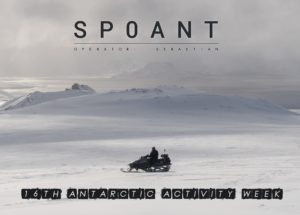 Another ”New Entry” in the 16th AAW is Sebastian Gleich SQ1SGB who has got his AAW callsign as SPØANT (WAP-298) and will join the International Antarctic Activity Week. QSL via SQ1SGB.
Another ”New Entry” in the 16th AAW is Sebastian Gleich SQ1SGB who has got his AAW callsign as SPØANT (WAP-298) and will join the International Antarctic Activity Week. QSL via SQ1SGB.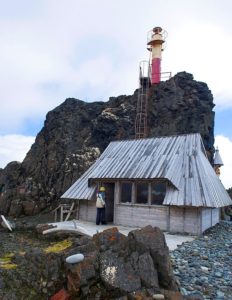
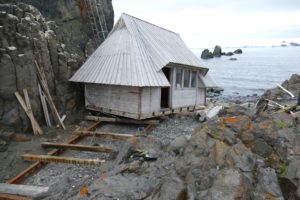 s a “Turist house”! Upon being established, its location was barely a dozen meters from the sea. Now, during high tide, it is less than a meter away. That little house, was build in 1998 from wood waste after the general rebuild of the Station. The main builders was Zubek brothers and Suszczewski, originator and chief builder of Arctowski.
s a “Turist house”! Upon being established, its location was barely a dozen meters from the sea. Now, during high tide, it is less than a meter away. That little house, was build in 1998 from wood waste after the general rebuild of the Station. The main builders was Zubek brothers and Suszczewski, originator and chief builder of Arctowski.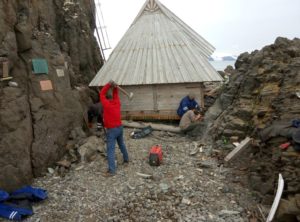
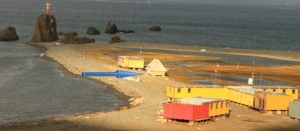
 rctica; while the first
rctica; while the first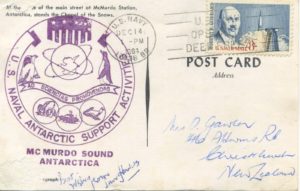 ay be the oldest Antarctic relic on the continent.
ay be the oldest Antarctic relic on the continent. Last 2017, Sebastian (Seba) Gleich, SQ1SGB electronics engineer was overwintering in Antarctica, among the 41st Polish Scientific Expedition, with the task of monitoring of the atmosphere’s electricity. Beside Arctowski Station (WAP POL-Ø1), Poland own two field bases : Lions Rump Refuge (WAP POL-NEW) and Demay Point Refuge (WAP POL-NEW).
Last 2017, Sebastian (Seba) Gleich, SQ1SGB electronics engineer was overwintering in Antarctica, among the 41st Polish Scientific Expedition, with the task of monitoring of the atmosphere’s electricity. Beside Arctowski Station (WAP POL-Ø1), Poland own two field bases : Lions Rump Refuge (WAP POL-NEW) and Demay Point Refuge (WAP POL-NEW). Being an electronic specialist, Seba did work at Lions Rump Refuge (30 km away) to build communication stuff to link Arctowski main station. He sets the mast with antenna at the highest site using all of RG 213 cable available then, he realized that he could not connect his delta mini to the transceiver, without feeder.
Being an electronic specialist, Seba did work at Lions Rump Refuge (30 km away) to build communication stuff to link Arctowski main station. He sets the mast with antenna at the highest site using all of RG 213 cable available then, he realized that he could not connect his delta mini to the transceiver, without feeder. After a couple weeks all was ready. All wintering crew did help me to set the hardware, mast and antennas . It was very hard; we had to pull the top and put something under the center with risk of collapse, then we attached the lashings. It was a long day but at the end, the new mast with my delta mini was on, with a good SWR.
After a couple weeks all was ready. All wintering crew did help me to set the hardware, mast and antennas . It was very hard; we had to pull the top and put something under the center with risk of collapse, then we attached the lashings. It was a long day but at the end, the new mast with my delta mini was on, with a good SWR. At the beginning, for two weeks I could not find propagation window (only 3 QSO’s ), so I decided to build a converter for digital modes. It did take me around one month. I make separation trafo from old analog phone, another one from a network card and on july 15,2017 I was on air (pics aside: the digital converter while in assembly). On JT65 and FT8 I make a lots of QSO, as well as on SSB.
At the beginning, for two weeks I could not find propagation window (only 3 QSO’s ), so I decided to build a converter for digital modes. It did take me around one month. I make separation trafo from old analog phone, another one from a network card and on july 15,2017 I was on air (pics aside: the digital converter while in assembly). On JT65 and FT8 I make a lots of QSO, as well as on SSB. Henryk Arctowski Polish Antarctic Station (WAP POL-Ø1), is located on King George Island in the South Shetland archipelago and it has been operating since the late 1970s.
Henryk Arctowski Polish Antarctic Station (WAP POL-Ø1), is located on King George Island in the South Shetland archipelago and it has been operating since the late 1970s.
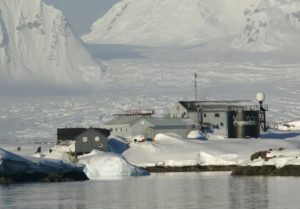
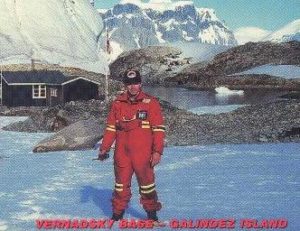 , is among the Team actually travelling to reach Vernadsky Base, Galindez Island; Ronan will operate on HF Bands on his spare time, signing EM1UA and EM1U .
, is among the Team actually travelling to reach Vernadsky Base, Galindez Island; Ronan will operate on HF Bands on his spare time, signing EM1UA and EM1U .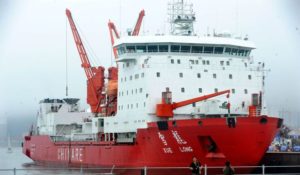 The MV Xue Long (which translates as Snow Dragon), was moving through the Amundsen Sea in “dense ice” when it struck the iceberg, China’s Ministry of Natural Resources said in a notice posted on its website.
The MV Xue Long (which translates as Snow Dragon), was moving through the Amundsen Sea in “dense ice” when it struck the iceberg, China’s Ministry of Natural Resources said in a notice posted on its website.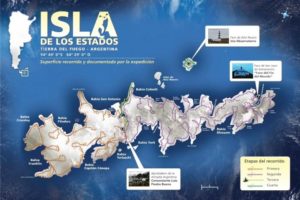 oday we’ll see WAP ARG-29.
oday we’ll see WAP ARG-29.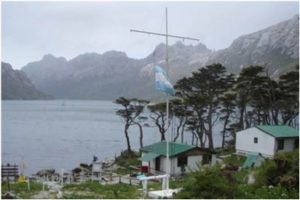 WAP ARG-29 – Isla de los Estados (Staten island) 54°47′00″South, 64°15′00″West, hosts a scientific station (pic aside) of the CADIC (Centro Austral de Investigaciones Científicas). In other sites of the Island, there are Scientific Stations that study different aspects of flora, fauna, etc. which, forced us to decide to inserted Isla de los Estados as a “New entry” into the WAP Directory.
WAP ARG-29 – Isla de los Estados (Staten island) 54°47′00″South, 64°15′00″West, hosts a scientific station (pic aside) of the CADIC (Centro Austral de Investigaciones Científicas). In other sites of the Island, there are Scientific Stations that study different aspects of flora, fauna, etc. which, forced us to decide to inserted Isla de los Estados as a “New entry” into the WAP Directory.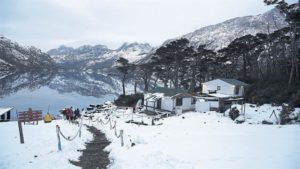 Com. Luis Piedrabuena Naval oupost (Apostadero Naval Piedrabuena) of the Argentine Navy.
Com. Luis Piedrabuena Naval oupost (Apostadero Naval Piedrabuena) of the Argentine Navy.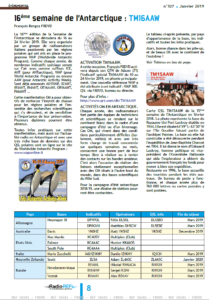 In the last issue of Radio Ref. January 2019, the French radio magazine there an article about the 16th AAW (Antarctic Activity Week) , written by François F8DVD – TM16AAW .
In the last issue of Radio Ref. January 2019, the French radio magazine there an article about the 16th AAW (Antarctic Activity Week) , written by François F8DVD – TM16AAW .
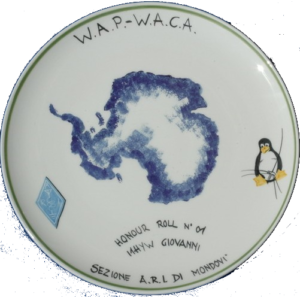 2019 Edition of the WAP-WACA & WAP-WADA directories (release 1.33 of Jan 16th 2019) have been uploaded on WAP website together with the IK6CAC software (release 032 to manage your WAP Awards). The 2019’s edition contains the new entries such as new Antarctic sites come to light or identified last year.
2019 Edition of the WAP-WACA & WAP-WADA directories (release 1.33 of Jan 16th 2019) have been uploaded on WAP website together with the IK6CAC software (release 032 to manage your WAP Awards). The 2019’s edition contains the new entries such as new Antarctic sites come to light or identified last year. references and a list of callsigns that qualify each of the references assigned.
references and a list of callsigns that qualify each of the references assigned.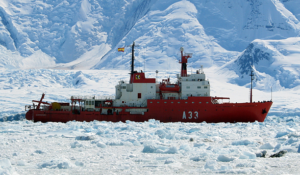 Spanish Antarctic Campaign. About two hundred scientists and technicians will be in charge of the research projects, which will be carried out in the transits of the ship which will serve as a platform for carrying out 24 research projects. The deglaciation of the Antarctic, the activity of submarine volcanoes and the impact of parasites and contaminants on the penguin’s immune system, are some of the most outstanding projects in the XXXII Spanish Antarctic Campaign.
Spanish Antarctic Campaign. About two hundred scientists and technicians will be in charge of the research projects, which will be carried out in the transits of the ship which will serve as a platform for carrying out 24 research projects. The deglaciation of the Antarctic, the activity of submarine volcanoes and the impact of parasites and contaminants on the penguin’s immune system, are some of the most outstanding projects in the XXXII Spanish Antarctic Campaign.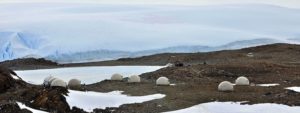 At 70° 45’ 51”South, 11° 37′ 01”East within the Schirmacher Oasis, Whichaway Camp (WAP MNB-NEW) is located within the wider study area comprise the Indian Maitri Research station (WAP IND-Ø3), and Russian Novolazarevskaya Research station (WAP RUS-Ø9).
At 70° 45’ 51”South, 11° 37′ 01”East within the Schirmacher Oasis, Whichaway Camp (WAP MNB-NEW) is located within the wider study area comprise the Indian Maitri Research station (WAP IND-Ø3), and Russian Novolazarevskaya Research station (WAP RUS-Ø9).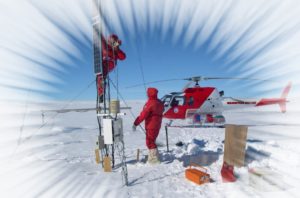 The 16th edition of the Antarctic Activity Week (AAW) will be on air next February 16th and will last till the 24th.
The 16th edition of the Antarctic Activity Week (AAW) will be on air next February 16th and will last till the 24th.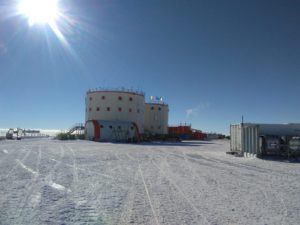 Danilo IZ1KHY is actually at Concordia Station (WAP MNB-Ø3) following a group of researchers. He will stay at Concordia till Jan 15th.
Danilo IZ1KHY is actually at Concordia Station (WAP MNB-Ø3) following a group of researchers. He will stay at Concordia till Jan 15th. Not to forget that, when there is air traffic, the HF radio is room is busy for the air traffic controllers.
Not to forget that, when there is air traffic, the HF radio is room is busy for the air traffic controllers.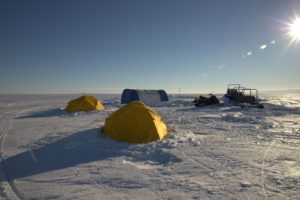 The Atka Bay Skiway site (70°36’45” S, 8°07’25” W) is the location of the Emperor Penguin colony. The Camp, managed by White Desert Company lies not too far away to the structure of German Research Station Neumayer III (70°40´S, 8°16´W), and stands right between Neumayer III (WAP DEU-Ø8) and Neumayer Emergency Base (WAP ZAF-11).
The Atka Bay Skiway site (70°36’45” S, 8°07’25” W) is the location of the Emperor Penguin colony. The Camp, managed by White Desert Company lies not too far away to the structure of German Research Station Neumayer III (70°40´S, 8°16´W), and stands right between Neumayer III (WAP DEU-Ø8) and Neumayer Emergency Base (WAP ZAF-11). White Desert (
White Desert (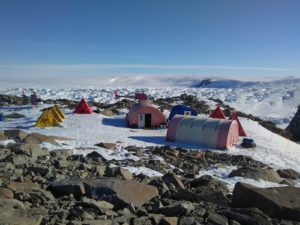 Located at 75°53’ South, 162°45’East, Starr Nunatak marking the North site of the mouth of Harbord glacier on the coast of Victoria Land, Antarctica.
Located at 75°53’ South, 162°45’East, Starr Nunatak marking the North site of the mouth of Harbord glacier on the coast of Victoria Land, Antarctica.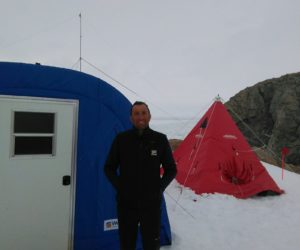
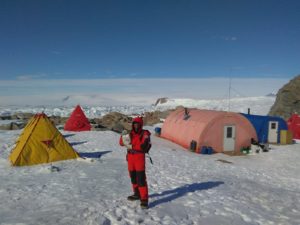 unfortunately, even if he did try hard, there was no openings to any other direction. To this remote site a new WAP reference MNB-1Ø has just been given .
unfortunately, even if he did try hard, there was no openings to any other direction. To this remote site a new WAP reference MNB-1Ø has just been given .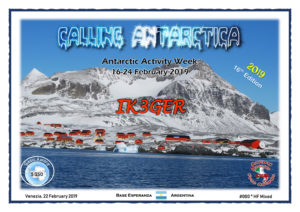 Every year, in the month of February, a special event called ANTARCTIC ACTIVITY WEEK is set up. This year, the 16th AAW will be held from February 16th to 24th.
Every year, in the month of February, a special event called ANTARCTIC ACTIVITY WEEK is set up. This year, the 16th AAW will be held from February 16th to 24th. The “New collection TAAF 2019” marks the tribute to Mario Zucchelli, director of the Italian Antarctic Program, who deceased on 24/10/2003,
The “New collection TAAF 2019” marks the tribute to Mario Zucchelli, director of the Italian Antarctic Program, who deceased on 24/10/2003,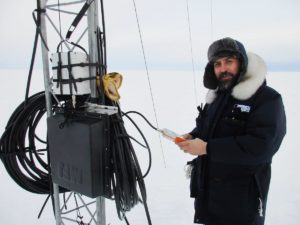 Matthias, DH5CW (Pic to the Left), and Felix, DL5XL (Pic to the Right), will be active from Neumayer Emergency Base (also known as SANAP Summer Base, WAP ZAF-11), Grid Locator IB59uj, from January 8 to 9, 2019 (weather permitting). The call sign used will be DP0GVN/p.
Matthias, DH5CW (Pic to the Left), and Felix, DL5XL (Pic to the Right), will be active from Neumayer Emergency Base (also known as SANAP Summer Base, WAP ZAF-11), Grid Locator IB59uj, from January 8 to 9, 2019 (weather permitting). The call sign used will be DP0GVN/p.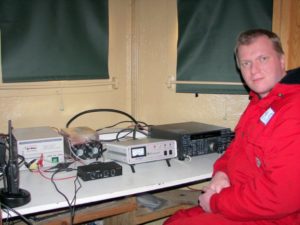
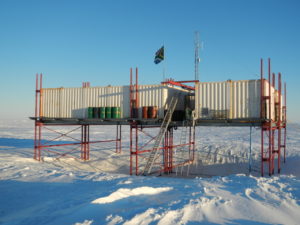 SANAP Summer Station/Neumayer Emergency Base 70º38´59´´South, 08º14´59´´West, WAP ZAF-11
SANAP Summer Station/Neumayer Emergency Base 70º38´59´´South, 08º14´59´´West, WAP ZAF-11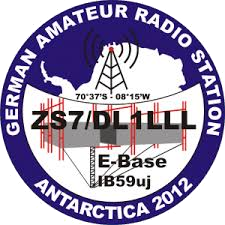 Today, just the garage is used as a storage facility by SANAP.
Today, just the garage is used as a storage facility by SANAP.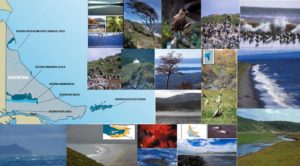 Hams of Radio Club Ushuaia plan to activate the six protected areas of the Tierra del Fuego Province, doing radio activity in each and every one of them. Date will be announced gradually as long as each the small expedition is fully organized. The tentative calendar includes January, February and March 2019.
Hams of Radio Club Ushuaia plan to activate the six protected areas of the Tierra del Fuego Province, doing radio activity in each and every one of them. Date will be announced gradually as long as each the small expedition is fully organized. The tentative calendar includes January, February and March 2019.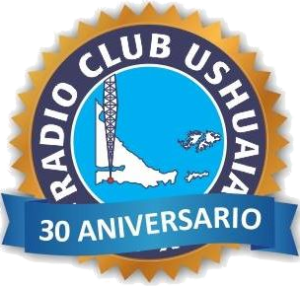
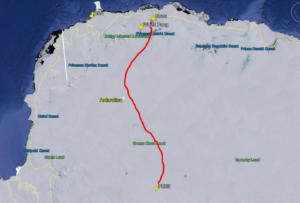 refueling location by the White Desert during the 2018-2019 season.
refueling location by the White Desert during the 2018-2019 season.
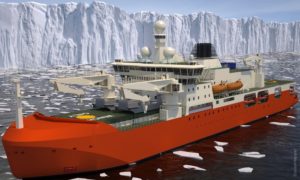 Australia’s new Antarctic Icebreaker and resupply ship RSV Nuyina, is due to arrive in Hobart in 2020. It will be the main lifeline to Australia’s Antarctic and sub-Antarctic research stations and the central platform of our Antarctic and Southern Ocean scientific research, to replace the Aurora Australis.
Australia’s new Antarctic Icebreaker and resupply ship RSV Nuyina, is due to arrive in Hobart in 2020. It will be the main lifeline to Australia’s Antarctic and sub-Antarctic research stations and the central platform of our Antarctic and Southern Ocean scientific research, to replace the Aurora Australis. To the researchers and personnel actually involved in Antarctica, to the scientific Organizations and Managers to whom we request to continue the research programs as a WW goal, to the Antarctic enthusiasts, to the students, to the Hams on the Icy Continent trying to set antennas and Radio to give us the emotion of a real DX, to our followers all over the world, WAP Staff wish Happy New Year 2019!
To the researchers and personnel actually involved in Antarctica, to the scientific Organizations and Managers to whom we request to continue the research programs as a WW goal, to the Antarctic enthusiasts, to the students, to the Hams on the Icy Continent trying to set antennas and Radio to give us the emotion of a real DX, to our followers all over the world, WAP Staff wish Happy New Year 2019! s to Eugene RZ3EC, to Alexei RN1ON and to Alexander RW3RN, here below are some information about the now a day activity by Russian Hams in Antarctica:
s to Eugene RZ3EC, to Alexei RN1ON and to Alexander RW3RN, here below are some information about the now a day activity by Russian Hams in Antarctica: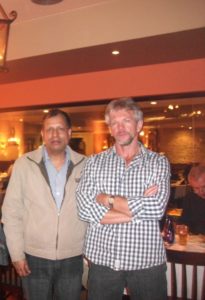
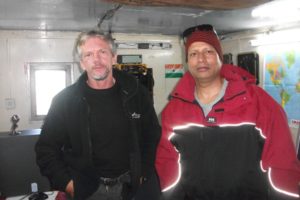 who is actually among a logistics convoy in southern Antarctica and for time to time active on CW 30 & 40 mts bands. His last coordinates/Grid locator KA06: Lat. -83.40448, Long. 20.58928.
who is actually among a logistics convoy in southern Antarctica and for time to time active on CW 30 & 40 mts bands. His last coordinates/Grid locator KA06: Lat. -83.40448, Long. 20.58928. The final miles of a nearly two-month race across Antarctica, a lonely effort marked by long days, short nights and stunning endurance, ended Wednesday with a sprint to the finish.
The final miles of a nearly two-month race across Antarctica, a lonely effort marked by long days, short nights and stunning endurance, ended Wednesday with a sprint to the finish. Felix Riess, DL5XL, is actually signing DP1POL/P from Kohnen Station (WAP DEU-11), Antarctica. The time of Felix stay at Kohnen is not known. QSL via DL1ZBO
Felix Riess, DL5XL, is actually signing DP1POL/P from Kohnen Station (WAP DEU-11), Antarctica. The time of Felix stay at Kohnen is not known. QSL via DL1ZBO
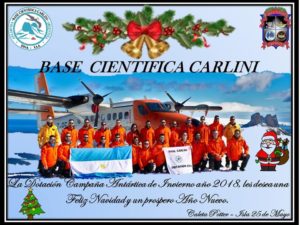


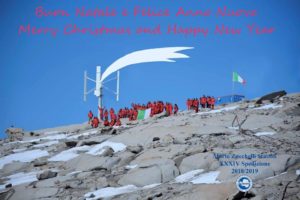
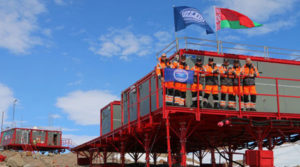 Belarusian Antarctic Station 67° 39’ 30” South, 46° 09’ 12” East, Mount Vechernyaya, Enderby Land, East Antarctica.(WAP BLR-NEW)
Belarusian Antarctic Station 67° 39’ 30” South, 46° 09’ 12” East, Mount Vechernyaya, Enderby Land, East Antarctica.(WAP BLR-NEW)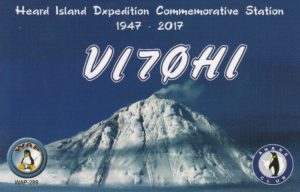 Thanks to Charles R. Wilmott, MØOXO for his excellent QSL service.
Thanks to Charles R. Wilmott, MØOXO for his excellent QSL service.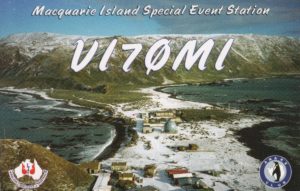 years of ANARE (Australian National Antarctic Research Expeditions) for Macquarie Island, which since 1947 have served Australia in the south polar regions.
years of ANARE (Australian National Antarctic Research Expeditions) for Macquarie Island, which since 1947 have served Australia in the south polar regions.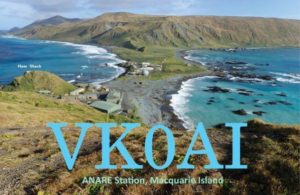 Just to remind the chasers that Norbert (VK5MQ) is still active as VKØAI from Macquarie Island and expect to be there till March 2019; follow the spotson the Cluster. .He has internet access, and is an avid user of both FT8 & eQSL.cc, so if you make a contact expect it to be confirmed via eQSL within minutes!
Just to remind the chasers that Norbert (VK5MQ) is still active as VKØAI from Macquarie Island and expect to be there till March 2019; follow the spotson the Cluster. .He has internet access, and is an avid user of both FT8 & eQSL.cc, so if you make a contact expect it to be confirmed via eQSL within minutes!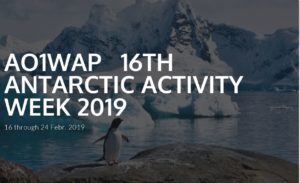 11 years ago, the 1st participation to the Antarctic Activity Week by the EA1CS’s Spanish Team, was one of the important presence, to promote Worldwide attention to the Icy Continent as a land of science and peace, to its wildlife, to the thousands of studies that involve the entire worldwide community. On the occasion of that first EA’s AAW (11 years ago), the group will be “On the Air” again signing AO1WAP (WAP-137), from February 16 to 24, 2019.
11 years ago, the 1st participation to the Antarctic Activity Week by the EA1CS’s Spanish Team, was one of the important presence, to promote Worldwide attention to the Icy Continent as a land of science and peace, to its wildlife, to the thousands of studies that involve the entire worldwide community. On the occasion of that first EA’s AAW (11 years ago), the group will be “On the Air” again signing AO1WAP (WAP-137), from February 16 to 24, 2019. Very sad news coming from Antarctica.
Very sad news coming from Antarctica.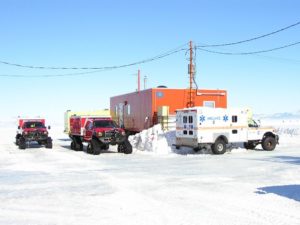
 RI1ANC – Vostok (WAP RUS-13): Alexei Turkeev, RD1AV (Season Team leader), just arrived at Vostok Base for the new campaign, is now active as RI1ANC during his spare time
RI1ANC – Vostok (WAP RUS-13): Alexei Turkeev, RD1AV (Season Team leader), just arrived at Vostok Base for the new campaign, is now active as RI1ANC during his spare time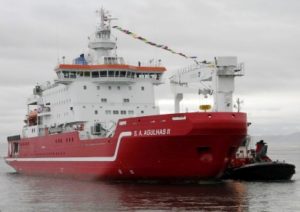 South Africa’s Polar research vessel the SA Agulhas II departs for Antarctica on Friday. Fifty-eight scientists are on board and will spend 14 months on the icy continent; the Weddell Sea Expedition will conduct marine and glaciological research.
South Africa’s Polar research vessel the SA Agulhas II departs for Antarctica on Friday. Fifty-eight scientists are on board and will spend 14 months on the icy continent; the Weddell Sea Expedition will conduct marine and glaciological research.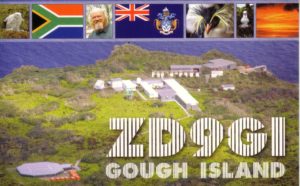 On Gough Island (WAP ZAF-Ø5), about 400 km (250 mi) south-east of the Tristan da Cunha archipelago there is a Scientific Research base and a Weather Station which the South African National Antarctic Programme has maintained, with British permission, continually on the island since 1956.
On Gough Island (WAP ZAF-Ø5), about 400 km (250 mi) south-east of the Tristan da Cunha archipelago there is a Scientific Research base and a Weather Station which the South African National Antarctic Programme has maintained, with British permission, continually on the island since 1956. Researchers and personnel of Polish Arctowski Station (WAP POL-Ø1) in Antarctica did celebrate the Antarctica Day on last Dec. 1st .
Researchers and personnel of Polish Arctowski Station (WAP POL-Ø1) in Antarctica did celebrate the Antarctica Day on last Dec. 1st .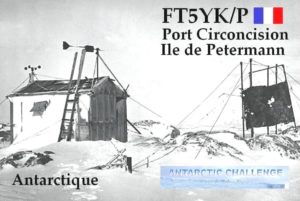 Mehdi, F5PFP wrote: As regards VP8DLM , FT5YK , CE9XX (2011 Antarctic Expedition) , the QSL cards have been almost exhausted. It is an occasion to print new cards with a new design for a final and limited edition , anyone interested?
Mehdi, F5PFP wrote: As regards VP8DLM , FT5YK , CE9XX (2011 Antarctic Expedition) , the QSL cards have been almost exhausted. It is an occasion to print new cards with a new design for a final and limited edition , anyone interested? ISEA is a multi-disciplinary, multi-institutional program conducted every year by the Union Ministry of Earth Sciences, started in 1981. It has gained global acceptance after India signed Antarctic Treaty.
ISEA is a multi-disciplinary, multi-institutional program conducted every year by the Union Ministry of Earth Sciences, started in 1981. It has gained global acceptance after India signed Antarctic Treaty.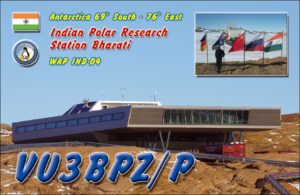 f Bharti Promontory.
f Bharti Promontory.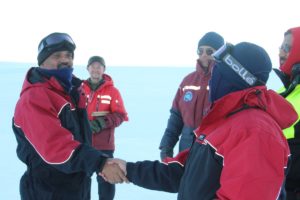 rector
rector 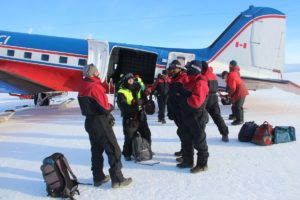 General, GSI and Veteran Antarctican was guest speaker together with Dr. M. Ravichandran, Director NCPOR; Shri M. Javed Beg and Dr. Thamban Meloth, Dr. K.P. Krishnan, Dr. Mahesh B.S. along with the members of fourth batch of expeditionners ready to head down South!
General, GSI and Veteran Antarctican was guest speaker together with Dr. M. Ravichandran, Director NCPOR; Shri M. Javed Beg and Dr. Thamban Meloth, Dr. K.P. Krishnan, Dr. Mahesh B.S. along with the members of fourth batch of expeditionners ready to head down South!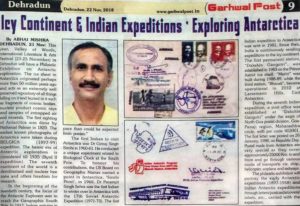 A great Antarctic Philatelic exhibition named “Icy Continent & Indian Expeditions ‘ Exploring Antarctica” curated by Abhay Mishra at Valley of Words , International Literature & Art Festival, Dehra Dun. Venue – Hotel Madhuban, Blue Star Gallery (India), has just ended on last 25th Nov 2018.
A great Antarctic Philatelic exhibition named “Icy Continent & Indian Expeditions ‘ Exploring Antarctica” curated by Abhay Mishra at Valley of Words , International Literature & Art Festival, Dehra Dun. Venue – Hotel Madhuban, Blue Star Gallery (India), has just ended on last 25th Nov 2018. Uttarakhand. He has authored a book titled “Uttarakhand – A philatelic Journey”, published by Department of Post, Uttarakhand Circle. He has been to Antarctica with the XXI Indian Scientific Expedition as a communication officer. Professionally he is a scientist with Defence Research and Development Organization. (Pic aside shows Abhay Mishra & Dr. G.S Shirohi, Ph.D Delhi University)
Uttarakhand. He has authored a book titled “Uttarakhand – A philatelic Journey”, published by Department of Post, Uttarakhand Circle. He has been to Antarctica with the XXI Indian Scientific Expedition as a communication officer. Professionally he is a scientist with Defence Research and Development Organization. (Pic aside shows Abhay Mishra & Dr. G.S Shirohi, Ph.D Delhi University)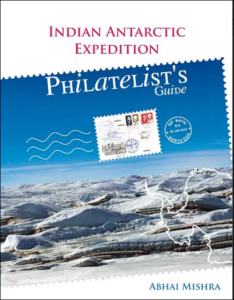 India’s involvement with Antarctic Expeditions, dates back to circa 1911.
India’s involvement with Antarctic Expeditions, dates back to circa 1911.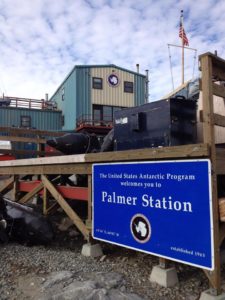 Originally built by U.S. Navy Seabees in 1967, Palmer Station (WAP USA-23) is located at 64°46′ S, 64°03′ W on Anvers Island, near the tip of the Antarctic Peninsula; it is named for Nathaniel B. Palmer, a Connecticut sealer who, on 17 November 1820, during an exploratory voyage ranging southward from the South Shetland Islands, may have been the first person to see Antarctica. (British and Russian ships were in the area at about the same time.)
Originally built by U.S. Navy Seabees in 1967, Palmer Station (WAP USA-23) is located at 64°46′ S, 64°03′ W on Anvers Island, near the tip of the Antarctic Peninsula; it is named for Nathaniel B. Palmer, a Connecticut sealer who, on 17 November 1820, during an exploratory voyage ranging southward from the South Shetland Islands, may have been the first person to see Antarctica. (British and Russian ships were in the area at about the same time.)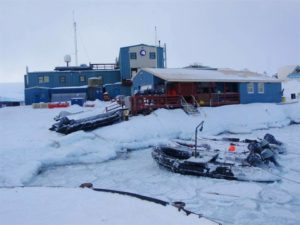
 A rendering of the proposed redevelopment and consolidation of buildings at McMurdo Station. This conceptual drawing is subject to revision prior to final design. (Image Credit: Leidos)
A rendering of the proposed redevelopment and consolidation of buildings at McMurdo Station. This conceptual drawing is subject to revision prior to final design. (Image Credit: Leidos)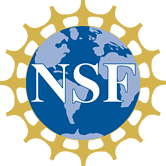 o being able to redevelop McMurdo into an energy and operationally efficient platform from which to launch world-class Antarctic science.
o being able to redevelop McMurdo into an energy and operationally efficient platform from which to launch world-class Antarctic science.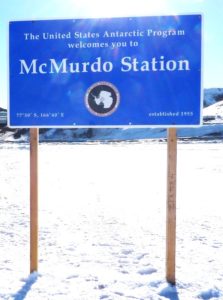
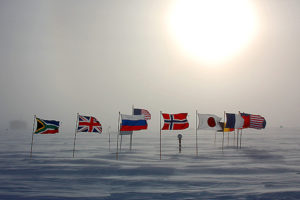
 Treaties and signatories
Treaties and signatories